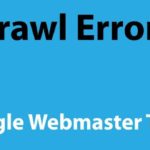Combating plagiarism
Plagiarism is a menace and is unfair to the writer. The writer is the one who has to take time out of his or her life to do something, only to have it stolen. The insult to the writer is palpable and if you are the person who paid money for the writing that has been stolen, then it is even more infuriating.
There is also a Google factor, as Google does penalize websites that have duplicate content, which is made worse by the fact that they penalize anyone and not just the one who stole the content. There are a few things that you can do to help combat plagiarism. Detect plagiarism for your essay for free at Domyessays.com.
Make the thief stop :-
You cannot assume that the person who has your content on their site is the one who stole your content. They may have purchased the content from the thief. You need to find out where your content is being posted online and contact the web master. Tell them that you own the copyright and that they should cease and desist. If the website is an article website then they will probably take it down straight away.
If you are having trouble getting a response from the website then use the “Whois” tool and get their address and phone number and get a little more personal.
Read :- How to Comment Effectively On Blogs To Drive Heavy Traffic To Your Site
You can try using free tools to find plagiarism :-
SmallSEOtools is a good one (smallseotools.com/plagiarism-checker) to try for free. It is a fairly simple design but is good for the fact it is free. All it does is chop up sections of your text and then run a Google search. If it finds any pieces that are mentioned verbatim on Google then it will let you know. This will indicate potential plagiarism. Obviously, such a thing has massive flaws in it, but for a free tool it is rather good and beats many of the other free tools.
Note it on the website :-
You can put a copyright notice on your website if you like. It is meaningless, as you automatically own the copyrights for anything you write whether you note it down on your website or not. But, some people assume that you take copyrights very seriously if you have noted it and added the symbol at the bottom of your page, so it is worth doing it just to keep the flies off.
CopySentry :-
This is a tool that comes with Copyscape. It allows you to routinely check your web pages to see if they are being copied by anyone. You set it by telling it which URLs to check and how often to check them. You do have to pay for the service, but it keeps a watch over your content to see if it is being copied. If it is then it will give you all of the URLs where you content appears.
Read :- 10 unique ways to increase your blog Traffic through YouTube
Routinely check manually :-
The CopySentry tool mentioned above is just an automatic method of doing what you can do manually if you like. Find yourself a good plagiarism checker or two, and try to find ones that are free. Then every month you copy your content and paste it onto the tools to see if any of it has been copied by another person. It is a pain having to check all of your pages manually, especially if you have a lot of them, but it is going to save you a bit of money whilst protecting you from plagiarism, so the choice is up to you.
Put a date on your content :-
Some people think that just because you have put a date on your content that is it now better protected. This is not the case as it makes no difference whatsoever, but you can use this bit of misinformation to your benefit. Every time you load a page onto your website you can just add a date to it and people will think that they will be punished if they try to copy your page after that particular date. You could even lie if you want and upload a page and add a date that is two years earlier than the date you uploaded it if you like.
Read :- Digital Marketing Can Boost Your Business
Please share this post with your friends on Facebook as well as Google+, also subscribe to our mail list so that you will not miss out any future post and Don’t forget to comment below.
Join 25,000+ smart readers—don’t miss out!








